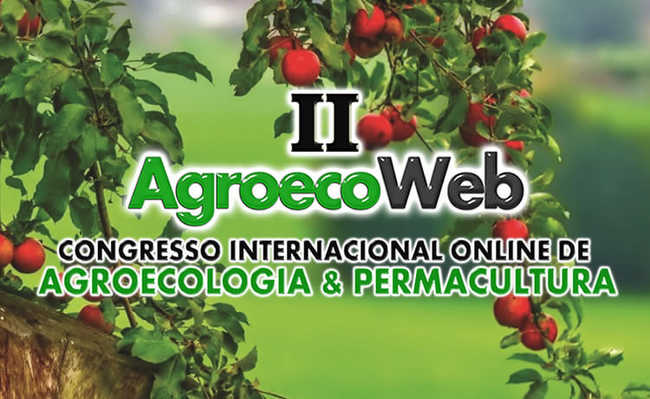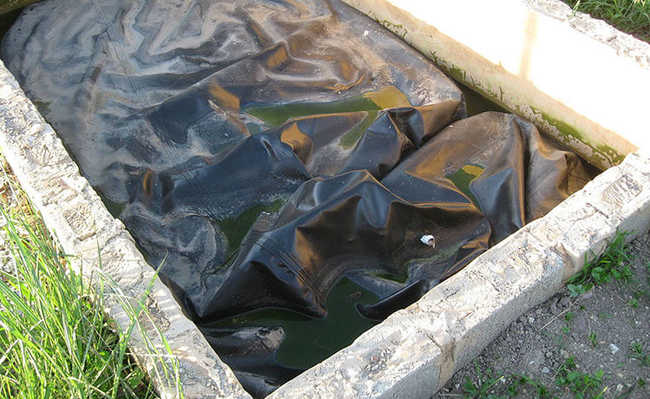Rural biodigester reduces impact and increases producer income
Understand what a rural biodigester is and how it works, equipment that helps in the sustainability of rural activities

image by Bill Harrison under this Creative Commons License
Agriculture and cattle raising generate environmental impacts mainly related to the following activities: deforestation and fires carried out to start new crops/pastures; use of pesticides and nitrogen fertilizers; soil compaction and inadequate management of animal waste and crop residues. One option to alleviate these problems and still generate profit for the producer is the rural biodigester.
- The consequences of agricultural development for the environment
- Intensive animal husbandry for meat consumption impacts the environment and consumer health
According to 2006 data from the Agricultural Census of the Brazilian Institute of Geography and Statistics (IBGE), Brazil has one of the five largest rural production areas in the world, occupying 38% of the national territory with agriculture and livestock, leading the country to to be among the largest exporters of agricultural products and also among the largest exporters of animal protein in the world. The fact that agriculture in Brazil is in a prominent position in the world market makes this sector strong for the country's economy, accounting for 23% of the national GDP in 2013, according to the Confederation of Agriculture and Livestock of Brazil (CNA) .
The problem is that the impacts caused by this economic activity are not exported together with the products... They stay here, degrading and contaminating Brazilian soils, air and waters. Understand some of these impacts and how the so-called rural biodigester can not only help to reduce these impacts but also generate profit for the rural producer.
Contamination of water and soil by animal waste
The waste generated in livestock - a set of animal feces, urine, wasted water from drinking fountains, sanitation water and feed residues - are rich in organic matter, nutrients and some pathogens (organisms capable of producing infectious diseases to their hosts) that, when improperly disposed, without any type of treatment, they can impact the soil and surface and underground waters.
According to the Food and Agriculture Organization of the United Nations (FAO), areas of concentration of animal production without adequate waste management can cause: eutrophication of water bodies and death of aquatic organisms; contamination of groundwater by nitrates and pathogens and consequent threat to human sources of supply; excess of nutrients and heavy metals in the soil, devaluing its quality; soil contamination by pathogens; release of gases into the atmosphere, such as ammonia and methane. The areas where agricultural activities are located are often close to river sources and surface and underground springs, and their preservation is essential to have quality water for everyone.
Greenhouse gas emissions
In 2015 the documentary “cowspiracy” denounced the environmental impacts of the agricultural industry, focusing on the lack of disclosure of the high level of contribution of this activity in terms of the emission of greenhouse gases (GHG). As mentioned in the film, among the activities that generate the most greenhouse gases that contribute to global warming are deforestation and farming. And it is mainly due to deforestation and agriculture that Brazil is among the ten countries that emit the most greenhouse gases (GHGs) in the world. The burning of fossil fuels for energy generation and the functioning of internal combustion engines in cars - often considered as the great villains of global warming - rank third as the biggest contributor to GHG emissions in Brazil, according to a SEEG survey. However, internal combustion engines are still the most responsible for air pollution.
According to the SEEG (Greenhouse Gas Emission Estimation System), the enteric fermentation of cattle is responsible for most of the emissions in the agricultural sector. This is due to the size of the Brazilian cattle herd - about 210 million heads in 2014 - and the fact that these animals depend on the fermentation carried out by bacteria in their stomachs to convert pasture and/or feed into meat or milk, and these bacteria produce methane (CH4) which is mainly eliminated through belching.
Among other gas emitters in the sector, we can mention the management of animal waste and burning of agricultural residues: the storage of animal manure favors the decomposition of organic matter by anaerobic bacteria (absence of oxygen), which results in the generation of methane gas ( CH4) and nitrous oxide (N2O), and burning agricultural residues (straws, stalks, and other crop residues) emit various greenhouse gases such as carbon dioxide and monoxide (CO2 and CO), nitrous oxide and other oxides ( N2O and NOx) and methane (CH4).
How does the rural biodigester work and why does it reduce these impacts and increase income?
The rural biodigester can help to reduce the impact of agriculture by helping to correctly dispose of animal waste, agricultural waste and even human waste from rural workers. These residues will naturally undergo a decomposition process when disposed on the soil or in rivers. The function of the biodigester is to receive these residues in a closed environment (usually formed by a canvas, as in the photo below) and waterproofed, where the decomposition process occurs in an anaerobic way (without oxygen) and the liquid and gas generated after the decomposition of the organic matter is collected to be used as organic fertilizer and biogas that can be used to generate mechanical, thermal or electrical energy.
This alternative prevents waste from being dumped in nature (without treatment), preserving soils and rivers, and also reduces the emission of greenhouse gases by capturing the gas generated in this process.
The liquid produced in this process can be used as an organic fertilizer/biofertilizer), as it has many nutrients, and the biogas generated must be drained to be burned (which turns it into CO2, a gas with less greenhouse effect than CH4) or used for power generation. Thus, the biofertilizer can be used to fertilize the pasture, resulting in financial savings for the farmer, who can save on the reduction in the purchase of chemical fertilizers, and the biogas can be used for energy generation. This energy can be used for cooking gas - as HomeBioGas is doing - or it can also be used to generate energy on the farm, saving on the purchase of external energy. See in the diagram below the purposes that the products produced by the rural biodigester can have:

Patriciabombs, Usinabiogas, marked as public domain, more details on Wikimedia Commons
Government Financial Incentives Can Help Buy Biodigester
In 2010, as part of the Brazilian commitments established in the Copenhagen Accord, and in line with the determination of the Policy on Climate Change, a government program was developed to help in the pursuit of sustainability in rural areas, the ABC Program (Low Carbon Agriculture ). This program finances, among other measures for rural activities, the implementation, maintenance and improvement of waste and animal waste treatment systems for energy generation (which include biodigesters).
Residential use of biodigesters
Although best known for its advantages brought to the management of agricultural waste - in rural areas - there are already biodigestion systems to be used in urban areas, where it can receive food waste and pet feces. The residential system is more compact, the biogas generated can be used (after adapting the feed hose) in the traditional stove and the biofertilizer in the garden.










